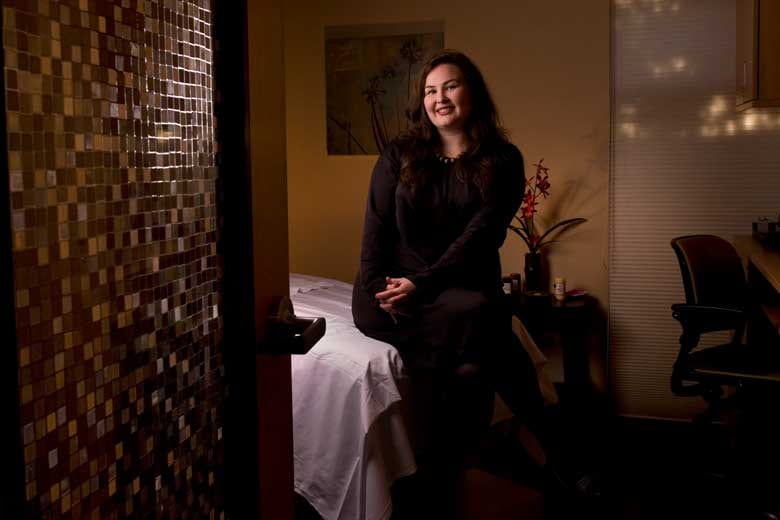Exam room design affects patient satisfaction
Grad student correlates innovative design with increased communication, patient satisfaction.

A visit to the doctor’s office can be intimidating, but a thoughtfully designed exam room can offer an environment that empowers patients, according to Julka Almquist, a UC Irvine doctoral student in the department of Planning, Policy, & Design.
“Tension in the exam room often is intensified because of how it’s set up, especially when a patient is sitting across from a physician who’s looking over medical records and charts. Exam rooms haven’t changed much over the history of hospitals and clinics,” she says.
During a design research fellowship in the SPARC Innovation Lab at Mayo Clinic, Almquist collaborated on a study with design researchers from office furniture company Steelcase Inc. They wanted to know whether the design and decor of an exam room could affect a patient’s experience.
At the Rochester, Minn., hospital, 63 patient-doctor pairs were assigned to either a conventional room or an experimental one. In the conventional room, the patient and doctor sat across from each other, and only the physician had access to the computer screen and the patient’s medical records. The experimental space put the patient and doctor side by side facing the computer screen while seated at a semicircular desk giving both the physician and patient the ability to view their medical records and any information on the screen.
Ninety-seven percent of study participants assigned to the experimental room said they were highly satisfied with their involvement in the decision-making process, compared to 83 percent of patients seen in the standard room. Seventy-one percent of subjects in the experimental room reported that physicians allowed them to review their medical records on the computer screen, versus 45 percent in the standard room.
“In the experimental room, patients felt like they could ask questions and make better-informed decisions,” Almquist says.
“The computer screen with the patient’s medical records, I believe, should be available to everyone in the room,” she adds. “Having a patient and physician sit side by side makes the visit feel more collaborative and less confrontational.”
Subjects had a median age of 69. Nationwide, people older than 65 make 228.9 million trips to doctors’ offices each year. The study monitored regular patient appointments, and conclusions were based on post-visit follow-up surveys of participants.
Results were recently published in Health Environments Research & Design Journal. Media outlets including Interior Design Magazine and the St. Paul Pioneer Press have carried stories about the study.
Moving from clinical settings to the outdoors, Almquist is currently examining design plans for the Orange County Great Park, a 1,300-acre redevelopment of the former El Toro Marine Corps Air Station in Irvine.
“Design has such a huge impact in our daily lives,” Almquist says. “I’m inspired by the fact that there’s always room for innovation when it comes to design.”


